F-35s Keep F-16s In The Fight During Northern Lightning
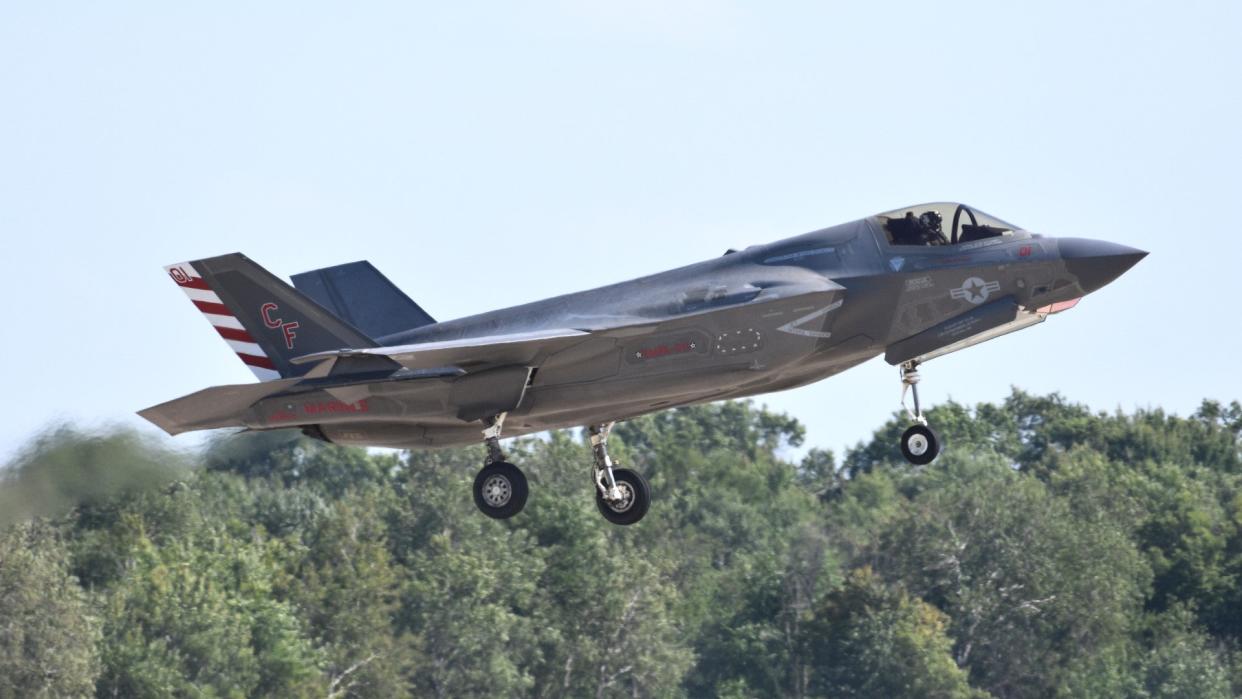
Stealthy Marine Corps F-35B Joint Strike Fighters, as well as F-35As from active-duty Air Force and Air National Guard units, have been 'quarterbacking' larger groups of fighters during an exercise in Wisconsin. In doing so, the F-35s have been helping to protect older, non-stealthy F-16 Viper fighters so those jets can then more effectively bring their larger missile loads to bear against mock enemy forces, including fighters and cruise missiles. Marines taking part in the exercise say this is exactly the kind of teamwork that will be necessary to succeed in any future high-end fight, such as one against China in the Pacific.
A trio of Marine officers – 4th Marine Aircraft Wing commander Maj. Gen. John Kelliher, head of Marine Air Control Group 48 Col. Ryan Allen, and Capt. Christopher "Melon" Streicher, a pilot from Marine Fighter Attack Squadron 211 (VMFA-211) – shared this and other details about this year's iteration of Exercise Northern Lightning in Wisconsin at a media event last week. Aviation photographer Andy Laurent was in attendance at the gathering on August 10th and was kind enough to share a recording of what was said, as well as pictures from the exercise. Another aviation photographer, Ivan Voukadinov, also generously shared additional images with us.

Northern Lightning is an annual Air National Guard-led exercise staged primarily out of Volk Field Air National Guard Base in Wisconsin. Northern Lightning 2023, which began on August 7th and runs through the 18th, has brought together Air National Guard and active-duty Air Force squadrons flying a mix of F-35A and F-16C/D aircraft, as well as Marine Corps F-35Bs, plus various supporting elements.
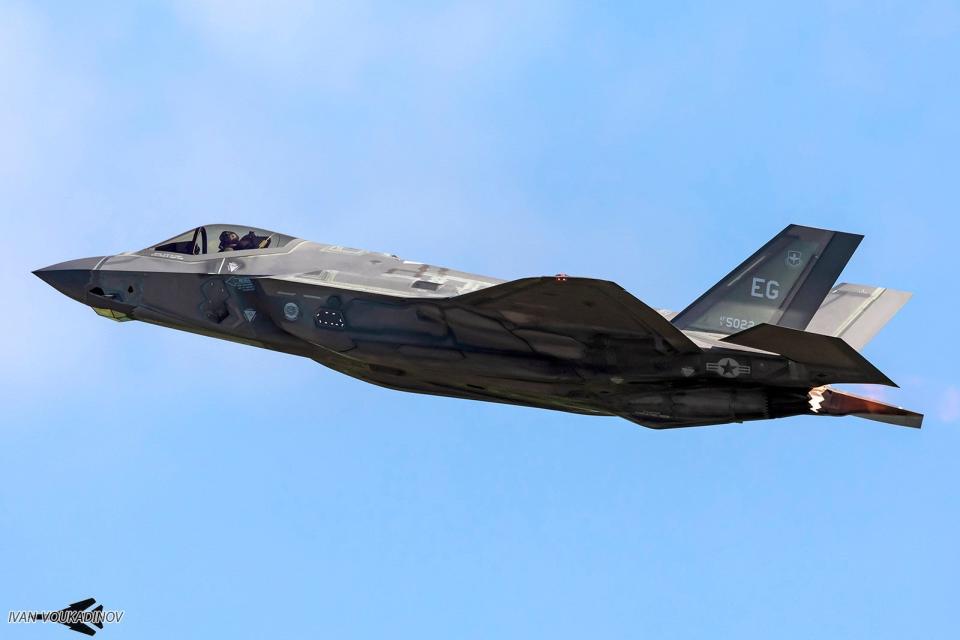

Air Force T-38 jet trainers and F-117 Nighthawk stealth jets, as well as contractor-owned and operated F-16 and Mirage F-1 fighters from Top Aces and the Airborne Tactical Advantage Company (ATAC), respectively, are also taking part as red air aggressors. Some F-35s have been doing double duty as adversaries, as well. Altogether, around 1,000 personnel and 60 aircraft are part of this year's Northern Lightning, according to an official release.
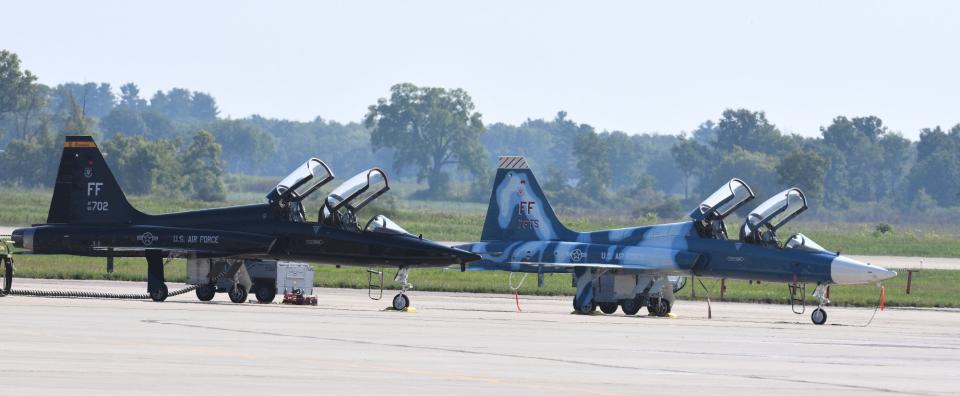


"We got a seat at the table for the high-end fight, for the very first couple days of a fight against a near-peer adversary," Capt. "Melon" Streicher, the pilot from VFMA-211, said. "So, it is very critical to us that we continue to train."
Streicher said scenarios focused on a critical mission set that the U.S. military refers to as "defensive counter-air" had been at the center of VFMA-211's first week at Northern Lightning 2023.
"So, you're defending an arbitrary line, but that line can be anything. It can be a FOB [forward operating base] for us, it can be a carrier. Pick your important item, right?" he explained. "So we're trying to keep them [the adversaries] from getting into [their] weapons release zone where they can impact that."
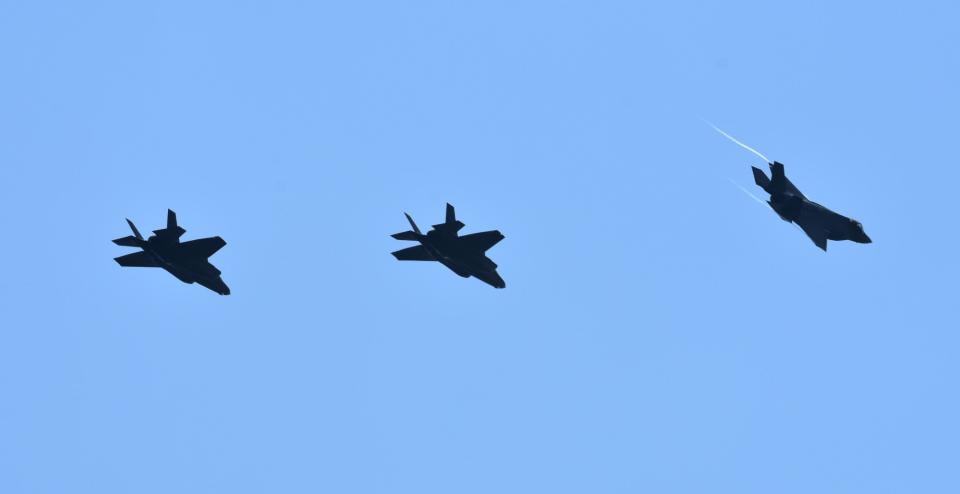
Defending against incoming cruise missile strikes has been another major focus area for Northern Lightning 2023, according to Streicher. Cruise missile defense is something the U.S. military has been increasingly concerned about, especially with regard to protecting the homeland. The conflict in Ukraine, where Russian forces continue to make significant use of air and sea-launched cruise missiles, has only added more real-world evidence about the very real threat that these weapons present.
Cruise missile defense "is difficult just by [the] nature of cruise missiles [which] are also LO [low observable; stealthy] targets usually," Streicher said. "They’re down low. So, it's about the worst scenario you can put a radar in to look down at the ground and try to find something small."
The Marine pilot immediately stresses that this was not solely the job of F-35s taking part in Northern Lightning, but also of the F-16s participating in the exercise. He further added that fifth and fourth-generation jets working closely together was a key focus area for the training.
“That's the crucial part of the integration for specifically... F-35, really," Streicher said. "We carry four missiles."
At present, all F-35 variants can only carry up to four AIM-120 Advanced Medium Range Air-to-Air Missiles (AMRAAM) internally (or a pair of AIM-120s and different mixtures of air-to-ground ordnance). They can carry additional air-to-air missiles and other munitions externally, but this negatively impacts their stealthy characteristics.

Work is being done to certify a new configuration that would allow Joint Strike Fighters to carry six AIM-120s in their internal weapon bays. It is not clear whether this modification will be woven into the larger Block 4 upgrade program for the F-35 or be a separate effort.
Regardless, the weapons adapter necessary for this, called Sidekick, will only work with the A and C variants. F-35Bs like the ones flown by the Marine Corps have smaller bays. This is due to the design constraints imposed by the large vertical lift fan unique to the short takeoff and vertical landing-capable B variant.

Unlike F-35s currently, "the F-16s are carrying six [missiles] each. So, we've got to get them into the fight and make them survivable," Streicher continued. "We lose them early, that's a problem. So our job… is to quarterback the fight a little bit."
The F-35's ability to serve as a quarterback for stealthy and non-stealthy aircraft in future operations, including ones involving aircraft from other branches and foreign allies and partners, has been touted as one of the Joint Strike Fighter's key attributes for years now. As The War Zone routinely highlights, the F-35's sensor and electronic warfare suites, and its ability to fuse data from all those sources together quickly and then disseminate that information to other assets, is the area where the jet excels the most. The Joint Strike Fighter also has the ability to feed additional data in from other sources to add to what its onboard systems are already vacuuming up. More upgrades to these capabilities are set to come with the F-35 Block 4 upgrade package.

Capt. Streicher made clear that these sensor fusion capabilities have been on full display during Northern Lightning 2023. In addition, Marine Air Control Group 48 has brought at least one ground-based AN/TPS-80 Ground/Air Task-Oriented Radar (G/ATOR) to the exercise, which is also helping pilots above get better visibility about the battlespace around them.
https://www.youtube.com/watch?v=1db1W60_JeU
"We've got really good SA [situational awareness] on what's out there, with assistance from the TPS-80, to let us build that picture," Streicher said. With that information in hand, we can "then start picking away at the higher threat stuff to keep the F-16s in a survivable… spot and fight for as long as possible.”
“Anytime we get a 'picture' where we can't turn the F-16s back around in it, because if you turn them back around [they’re] trading missiles with somebody – so, never a good scenario – we will typically take the hammer on that, keep them safe, [and] clean the leading edge up for them,” he added. After all that, "then [we] turn the F-16s back around."
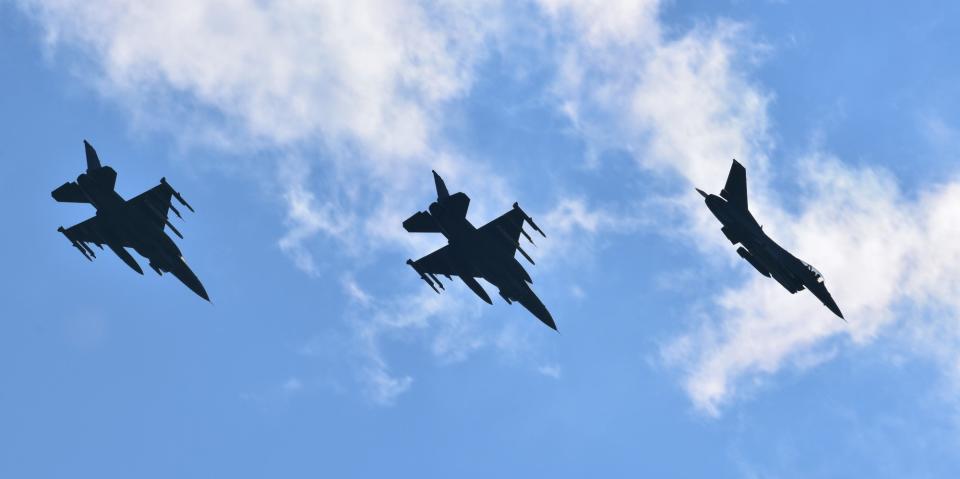
In this context, its worth noting that, in recent years, the U.S. Air Force has been steadily upgrading many of its F-16C/Ds, starting with ones in the Air National Guard, with new AN/APG-83 active-electronically-scanned array (AESA) radars. Vipers with these radars from Northrop Grumman, also known as Scalable Agile Beam Radars (SABR), can spot targets, even smaller ones, faster and at longer ranges and track them with greater precision and fidelity than they could before.
https://www.youtube.com/watch?v=JZnrtB9rRT8\u0026t=4s
Working with AESA-equipped F-16s is a major improvement since “they are a lot better at being able to see their own picture," according to Capt. Streicher. However, the upgraded Vipers still don't have anywhere near F-35's sensor capabilities or its ability to fuse that information together.
“We're providing them ‘point outs’ that they get," Streicher said. The F-35s still have the "ability to go forward against threats that may or may not be prohibitive to them, that are not prohibitive to us."
The capability differences also underscore the value of training closely together in exercises like Northern Lightning.
“We get so used to being very, very survivable, really deep in a [high] threat [environment]... They [fourth-generation jets like the F-16] can't count on the same things that we do and that’s something we don’t understand unless we really talk to them about it," Capt. Streicher explained. "We have documents, we have publications, but nothing replaces getting face-to-face conversations with a pilot. What is their tactic? What does this mean to you? How can I help you achieve your tactic? And really doing that on a day-in-day-out basis."

Learning how to closely coordinate with other friendly aircraft in the battlespace, regardless of their type, is important, too.
“You can get a very complex threat picture. We've got, you know, 12 airplanes that are pushing towards the area, making sure that no one gets missed. It always… starts off very smooth and very clinical. We're like, we see the picture, these guys are gonna shoot those guys," Capt. Streicher offered as an example. "We get a new picture, [we] decided [in exercise terms] he's [a mock threat] still alive. It's a little harder in training, because the metal doesn't disappear… you're not seeing the stuff fall out [of the sky]."
"And that's where the comm[unications] gets really big," he added, noting that sharing information can be just as important as the total number of missiles an aircraft has when it comes to determining success or failure in a tactical context.
Complimenting its sensor fusion capabilities, the F-35 has a robust communications and data-sharing suite. This includes a specialized stealthy Multifunctional Advanced Data Link (MADL) for talking with other Joint Strike Fighters, as well as Link 16 for talking with other platforms. Unfortunately, Link 16 transmissions, though encrypted, are easier for enemy forces to detect than MADL, and using that system can expose the position of an F-35. The Air Force has been leading efforts to try to find workarounds to this issue, including other crewed and uncrewed aircraft acting as communication gateway nodes. An intermediary like that offers a way for Joint Strike Fighters to send out data via MADL to other platforms without those links.

Overall, at least as of last Thursday, the "blue" side at Northern Lightning 2023 with its mixture of F-35s and F-16s working together was having success against the opposing force, or "red" side.
“I think our overall kill-to-death ratio right now is like 60 to one, to include the F-16s out there," according to Streicher, who added that the loss had come on day one of the exercise. On day two, not only did the blue force not sustain any losses, it was able to keep all threats 45 miles or more away from the "mission fail line," he added.
That's not to say the red air adversaries that the Marine aviator and others on the blue side have not been formidable. Northern Lightning 2023 features some of the highest-end mock opponents currently available to the U.S. military.
This includes a pair of F-117s, which are supporting the exercise from Duluth, Minnesota. It's unclear why the Nighthawks are not at Volk. When asked about this last week, Streicher said he didn't know, but suggested it could just be due to limited ramp space at the Air National Guard facility in Wisconsin. He also noted that the F-117s have unique requirements during deployments that might have been a factor.
https://twitter.com/aniemyer/status/1687592664315678720
"We can dedicate a couple of F-35s to red air, but having a couple more LO [stealthy] type threats out there just makes everyone work quite a bit harder," Streicher said about how the F-117s are contributing to the exercise. Though the Air Force officially retired the Nighthawk fleet in 2008, a portion of the jets has continued flying in support of training exercises like Northern Lightning 2023 and test and evaluation activities. Earlier this year, the service confirmed that it expects these aircraft to continue flying in those roles through at least 2034.
https://twitter.com/thenewarea51/status/1688727969223610368
“Anything that’s going to be an LO target for us they can simulate,” Streicher added. This includes playing the role of stealth cruise missiles, something the Air Force has previously disclosed that the Nighthawks have been doing in their new-found second career.
Northern Lightning 2023 has also featured heavily upgraded ex-Israeli F-16As with AESA radars and other improvements from private contractor Top Aces. You can read more about those aircraft and what sets them apart from other contract aggressors on the market today in this past War Zone feature.
https://www.youtube.com/watch?v=yK0DDM-Ip4s
“They're also slick F-16s, so if you end up in the merge with one, have fun," Streicher said, meaning these jets aren't flying with underwing drop tanks or other stores to slow them down. As a result, each one of those aircraft is a "rocket ship," he added.
"Those dudes are pretty good," the Marine captain also said of the pilots at the controls. You can read all about the extreme agility of these private F-16s here.

The older T-38s and Mirage F1s would offer ways to simulate different kinds of threats, including non-stealthy, supersonic cruise missiles and 4th generation fighters. They also just offer useful additional physical volume in terms of the total number of real mock threats in the air at any one time.

The "red" side at Northern Lightning isn't limited to aggressors in the air, either. Though not mentioned at last week's press event specifically, photographer Andy Laurent spotted a Joint Threat Emitter (JTE) at Volk.
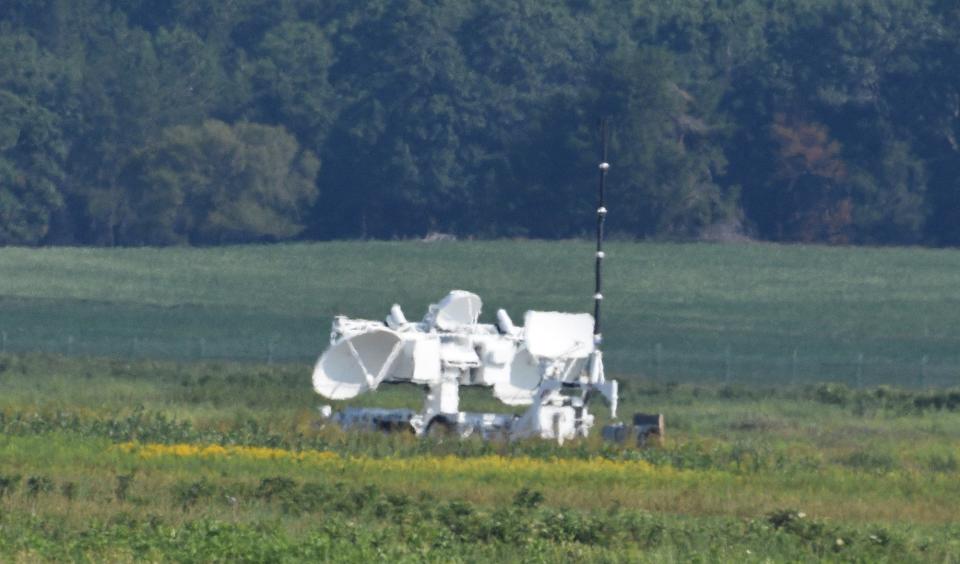
Produced by Northrop Grumman, the unassuming trailer-mounted JTE can replicate a wide array of different threat 'emissions,' including ones that pilots could expect to see emanating from radars associated with enemy surface-to-air missile systems or ground-based electronic warfare assets. Though we haven't seen any examples in use at Northern Lightning ourselves, systems like the JTE are often paired with mockups of enemy systems, including surface-to-air missile launchers, or even real examples that were previously captured or otherwise acquired, for extra realism.
https://www.youtube.com/watch?v=mPztkg0kKAk
Beyond all this, Streicher highlighted the value of having a relatively large red air contingent in just making it so that fewer U.S. military aviators had to spend time flying as members of the opposing force. He added that the relatively small size of Northern Lightning compared to other larger force exercises, like Air Force Red Flags, meant that individual participants had more opportunities to really hone their skills.
The airspace available for use during Northern Lightning is significantly smaller than is used for huge capstone exercises like Red Flag, making for a more intimate training event overall.

VFMA-211 actively fights to get a slot in Northern Lightning each year for that latter reason, according to Streicher.
In his comments, Maj. Gen. John Kelliher, the 4th Marine Aircraft Wing commander, underscored the overall value of sending Marines, specifically, to participate in Northern Lightning 2023. He explained that it offers them a dissimilar location to train in far from the typical aerial training ranges the Corps uses on the east or west coasts of the United States.
It is then also an opportunity to exercise a variety of logistical and other skill sets just in getting to Wisconsin from their home stations. VFMA-211, for instance, is based at Marine Corps Air Station Yuma in Arizona, some 1,500 miles away from Volk Field. The ability of Marine aviation units to readily deploy, especially to remote and austere locations, is a core element of new expeditionary and distributed concepts of operations the service is still refining. You can read more about these concepts, known collectively as Expeditionary Advance Base Operations (EABO), here.
https://www.youtube.com/watch?v=Z\u002d\u002dE8Zj5Vqc
Moving forces halfway across the country for a scheduled peacetime exercise is of course not the kind of expeditious movement that Marines might expect to conduct in a major crisis scenario. Still, Maj. Gen. Kelliher said there were opportunities to gain useful experience when heading out to events like Northern Lightning 2023.
“We move fast. We are lighter, mobile, and with the combination of the control group and the marine wing support squadron, we can potentially… just go create an airfield," he explained about Marine expeditionary aviation capabilities in general. "Create it, operate it, and support it, and then we let people with the shiny toys come on in."
"All that leads to basically winning and competition, so that every day, our enemies wake up and the calculus of their decision making says ‘not today,'" the head of the 4th Marine Aviation Wing continued. "That's what we all want. Should we fail it that, then we bring immeasurable amounts of lethality to the fight."
So “we will seek out any exercise as an opportunity for us to practice tactics, techniques, and procedures [TTPs]," he added. “Anytime there's an exercise out there, anytime there’s a fight going, we want in. …this is another training opportunity for them [Marine F-35 pilots] to train with other people who are looking at best practices, exchanging ideas, [and] TTPs.”
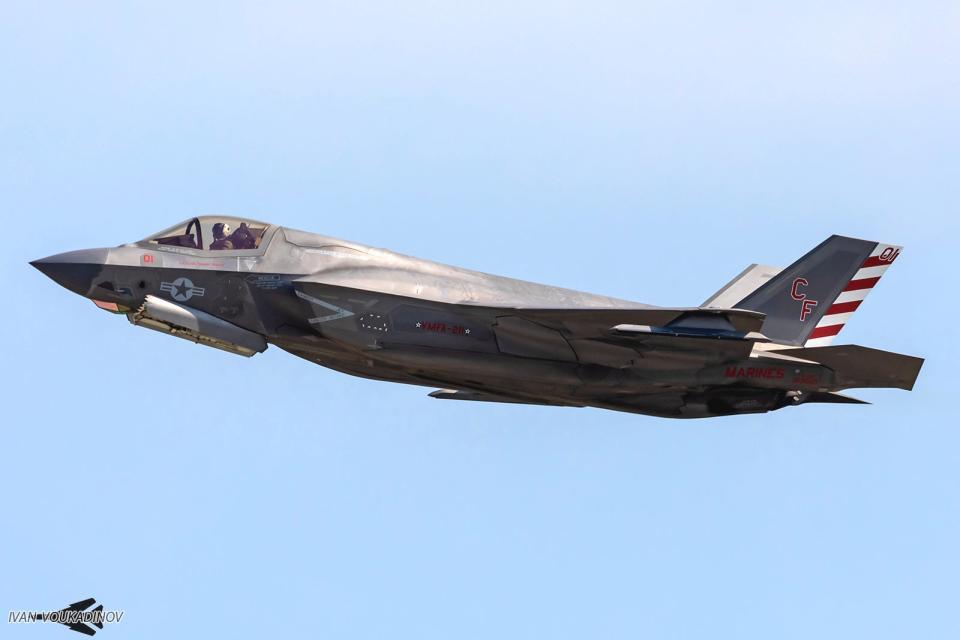
More details about Northern Lightning 2023 and what the various participants, not just the Marines, have been getting out of the exercise, are likely to come after it wraps up later this week. From the discussion at the media day last Thursday, it is clear that Marine Corps, active-duty Air Force, and Air National Guard pilots have already focused hard on the kind of teamwork, particularly between fourth and fifth-generation fighters, that will be essential for success in any future major conflict.
Contact the author: joe@thedrive.com

